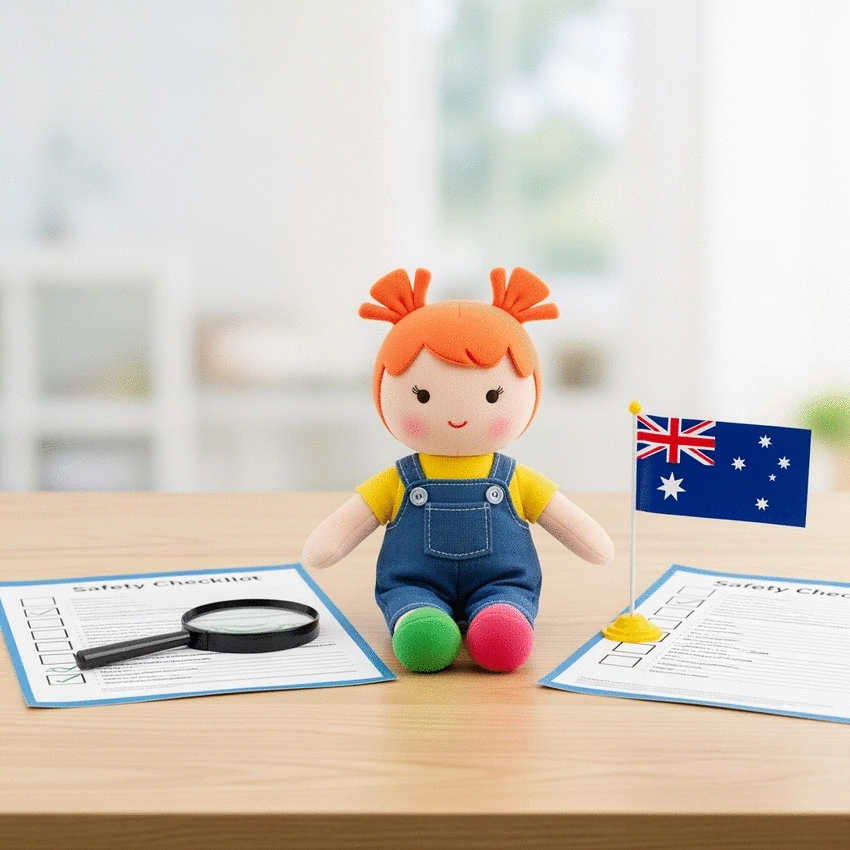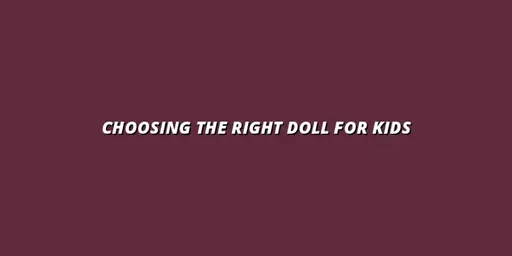Choosing the Right Doll for Kids
By Clara Whitmore / Oct 26
As a parent, your child's safety during playtime is paramount, especially when it comes to dolls. Did you know that not all dolls meet the necessary safety standards? Understanding these guidelines can empower you to make informed choices. Let's delve into what you will learn about doll safety!
Ensuring doll safety involves understanding local standards, recognizing certifications, and adopting safe play practices. Below is a visual representation of these crucial aspects for parents. For more information on doll care guides, check out our detailed resources.
AS/NZS ISO 8124 Series:
Certifications like AS/NZS ISO 8124.1 ensure rigorous testing & compliance.
When it comes to choosing dolls for our little ones, safety must be our top priority. At Everyday Dolls Australia, I understand the responsibility we have as parents and gift-givers to ensure that the dolls we select are not just delightful but also safe for play. In this section, we’ll explore why doll safety matters and what standards are in place to protect our children.
Every parent wants their child to have fun while staying safe. The reality is that not all dolls are created equal! Some may contain small parts or materials that are unsafe for children. By choosing dolls that meet safety standards, we can not only enhance playtime experiences but also give ourselves peace of mind. Remember, a doll should be a cherished friend, not a source of worry!
By keeping safety in mind during our shopping trips or online browsing, we contribute to a safer play environment for our kids. Let’s make informed decisions together!
Australia has established specific standards to govern the safety of children's toys, including dolls. These regulations are designed to provide guidelines that manufacturers must follow to ensure their products are safe for children. One of the primary standards is the AS/NZS ISO 8124 series, which outlines safety requirements and testing methods applicable to toys. For insights into how these standards relate to doll play benefits, explore our other articles.
These standards play a crucial role in the doll industry, ensuring that the toys we bring into our homes meet safety expectations. As parents, understanding these standards empowers us to make safer choices!
When shopping for dolls, look for toys that carry safety certifications. These certifications serve as a guarantee that the product has been thoroughly tested and complies with the relevant safety standards. It’s like having a little badge of honor for your doll!
By opting for dolls with recognized safety certifications, we can feel confident that we are choosing toys that prioritize our children’s safety. It’s all about making smart, informed decisions that protect our little ones during playtime!
When selecting dolls for your child, always prioritize those that carry recognized safety certifications. Not only do these certifications indicate that the doll has passed rigorous safety tests, but they also signal that the manufacturer is committed to quality and child safety. Look for labels such as AS/NZS ISO 8124 on packaging to ensure you're making a safe choice!
As a parent, ensuring the safety of your child's toys, especially dolls, is paramount. Navigating the doll market can be overwhelming, but by focusing on a few key best practices, you can make informed choices that promote safe play. Remember, the dolls your child interacts with should not only spark their imagination but also keep them safe!
Here are some key takeaways to keep in mind regarding doll safety:
By following these practices, you can feel confident that the dolls you select for your children are safe and sound, providing joy without concern. At Everyday Dolls Australia, we’re dedicated to helping you find the perfect dolls that inspire imaginative play while prioritizing safety.
Encouraging safe play is not just about the dolls themselves; it also involves the environment in which your child plays. Create a safe play area free of sharp objects and ensure that all toys are appropriate for their age group. Active supervision during playtime is also crucial, as it allows you to address any safety concerns as they arise! For more detailed information on doll collecting tips, visit our blog.
As parents, fostering an awareness of safety from a young age will instill good habits. Encourage your children to treat their dolls with care, teaching them that their toys deserve respect, just as they do. This not only promotes a safe play environment but also helps your child develop a sense of responsibility.
Continuous learning about doll safety is essential, and at Everyday Dolls Australia, we want to support you in this journey. Here are some valuable resources you can explore:
Staying informed about doll safety and child development will empower you to make the best choices for your family. Don’t hesitate to reach out if you have questions or need more information—let's keep our children safe together!
Here is a quick recap of the important points discussed in the article:

 Choosing the Right Doll for Kids
Choosing the perfect doll for your child is more than just about play; it’s a decision that influe
Choosing the Right Doll for Kids
Choosing the perfect doll for your child is more than just about play; it’s a decision that influe
 Popular Dolls for Kids in Australia
What if I told you that playing with dolls is more than just fun? It's a gateway to emotional intell
Popular Dolls for Kids in Australia
What if I told you that playing with dolls is more than just fun? It's a gateway to emotional intell
 Holiday Gifts for Aussie Kids
As the holiday season approaches, thoughtful gift-giving becomes a joyful journey. The perfect gift
Holiday Gifts for Aussie Kids
As the holiday season approaches, thoughtful gift-giving becomes a joyful journey. The perfect gift